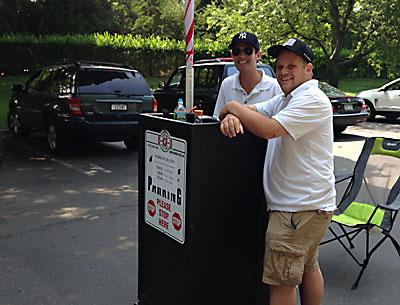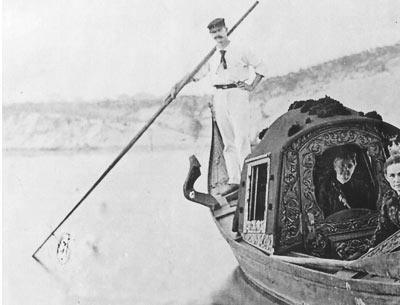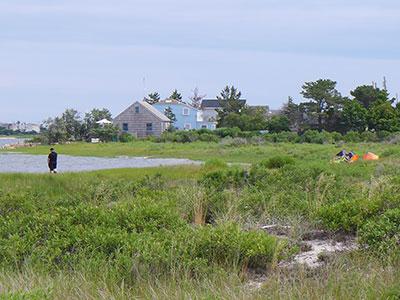Amagansett Square Opens New Front in Parking Wars
Amagansett Square Opens New Front in Parking Wars

Apparently undeterred by recent East Hampton Town efforts to discourage them from spending their summer weekends at the residents-only Indian Wells Beach in Amagansett, young share-house renters have been parking their cars all around the hamlet — even if it means trudging a mile lugging beer kegs and beach chairs — and leaving them behind for the day.
Some park in the town lot behind Main Street and walk or car-pool to the beach, or take taxis. By midmorning on sunny weekends the lot is often full, frustrating not only families out for breakfast or a stroll but also the merchants and restaurateurs who stand to lose the business.
Other coveted parking spots used to include the out-of-the-way streets nearer the beach, such as Further Court and St. Mary’s Lane, until, in response to homeowners’ pleas, the town installed no-parking signs there. The Ocean Dunes Apartments, a condo community on Bluff Road less than a quarter-mile from the beach, which was a prime target in years past, has put up signs alerting beach-bound cars to surveillance cameras, warning them away from its temptingly large front lot.
With parking in ever shorter supply, the crowds began zeroing in on the semi-private lot at Amagansett Square (semi-private because, while it is for use by the public, it is privately owned). And this summer, Amagansett Square, too, is fighting back.
Beginning on the July 4 weekend, drivers have been surprised to encounter, at both the Main Street and Hedges Lane entrances to the commercial complex, manned booths blocking their paths. The attendants politely offer time-stamped tickets, to be returned on the way out: free parking for two hours, $8 for the third hour, a stiff $30 for anything more.
“Our main goal was that people not abuse the Square,” said Fred Fiedler, its property manager. “It isn’t for beachgoers. Now people seem to get a spot much quicker.” The tenants had complained for several years, he said, that people were parking at the Square and walking the half-mile or so to Indian Wells, leaving their cars all day long to take up the spaces meant for shoppers.
The new system, the brainchild of the Square’s owner, Randy Lerner, seems to be working. “The first weekend, we had a few people pay $30,” said one valet, Joe Donohue, who leaves his house in Commack at around 5:30 a.m. on Friday and Saturday mornings to start work at 7. “Since then, not one.” Not a few cars, he said, turn around and leave when the drivers realize what is happening.
The reason the attendants start work so early is to pick up a few overnighters from the Stephen Talkhouse. The nightclub’s regulars, they explained, anticipating a long night, often leave their cars across the street at the Square and come back in the morning after sleeping it off. Like everyone else they get a grace period of two hours, but at 9 sharp the tab starts rolling.
Hampton Chutney, one of the Square’s 14 tenants, is particularly happy with the new system. “It’s usually mayhem in this lot,” said Isabel McGurn, who owns the popular eatery with her husband, Gary. “This guarantees some sanity,” she said, especially from noon to 3, when they get a big lunch crowd. “It’s all our customers then,” said Ms. McGurn. At the height of the crush, she said, the parking attendants, who work for a Valley Stream company called Parking Systems, may “do a little valet-ballet” to open spaces. “It has made a huge difference.”
Clients of the Salon and Day Spa who were late for appointments used to complain to Annie Barton, its owner, about watching people in bathing suits take bicycles off their cars and pedal away. “People seem to get a spot much quicker now,” said Ms. Barton.
“They affected business,” said Elena Biaggi, a manicurist. “We think this is a great idea.”
The Salon, like all the businesses in the Square, stamps the hands of clients who need to overstay the free two-hour limit.
The traditional end of the rental season, Labor Day, the first Monday of September, comes as early as possible this year, on Sept. 1. That day will also be — not coincidentally — the last day of paid parking at Amagansett Square.









